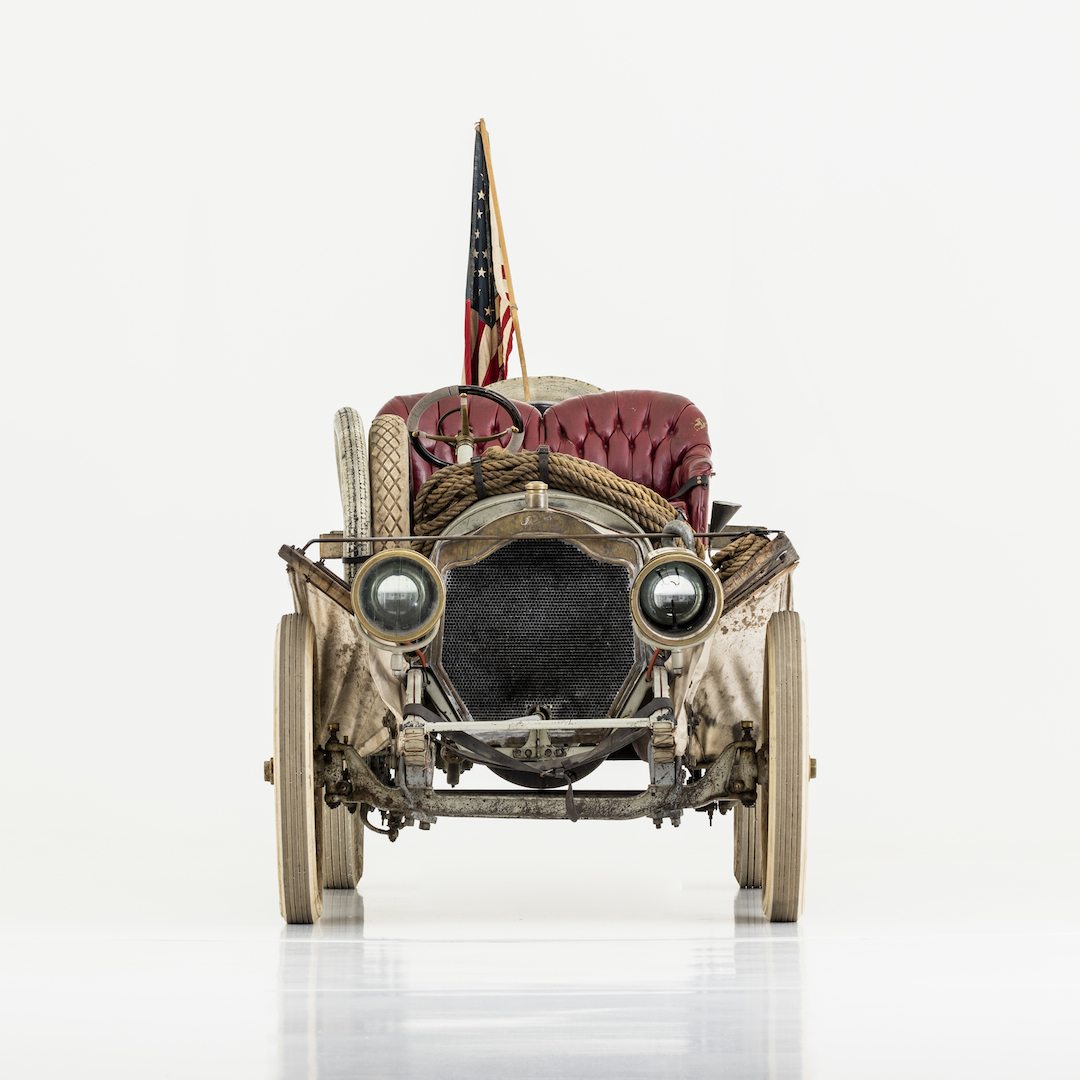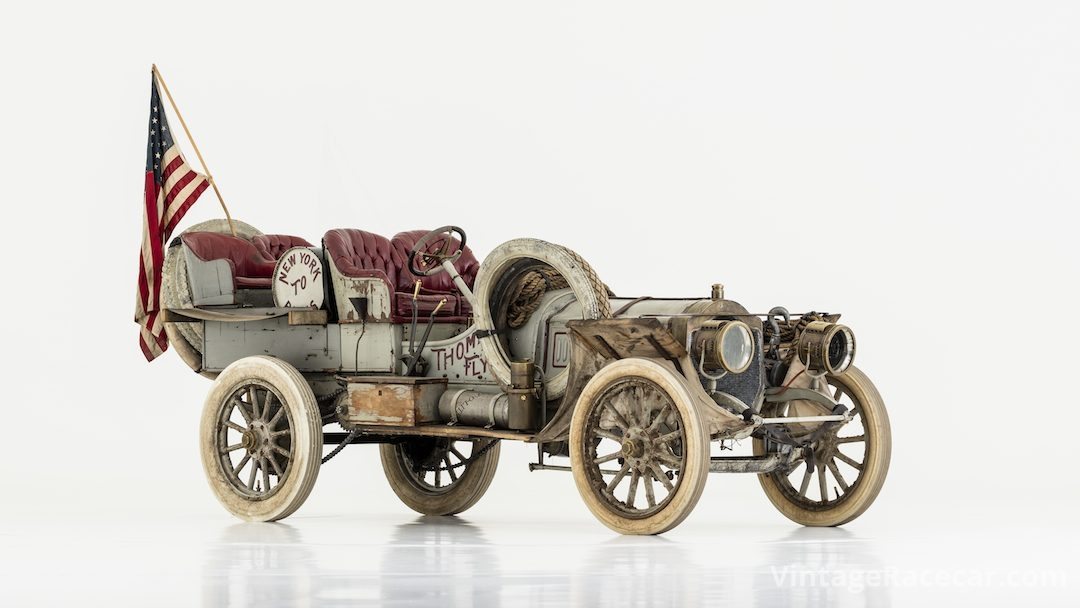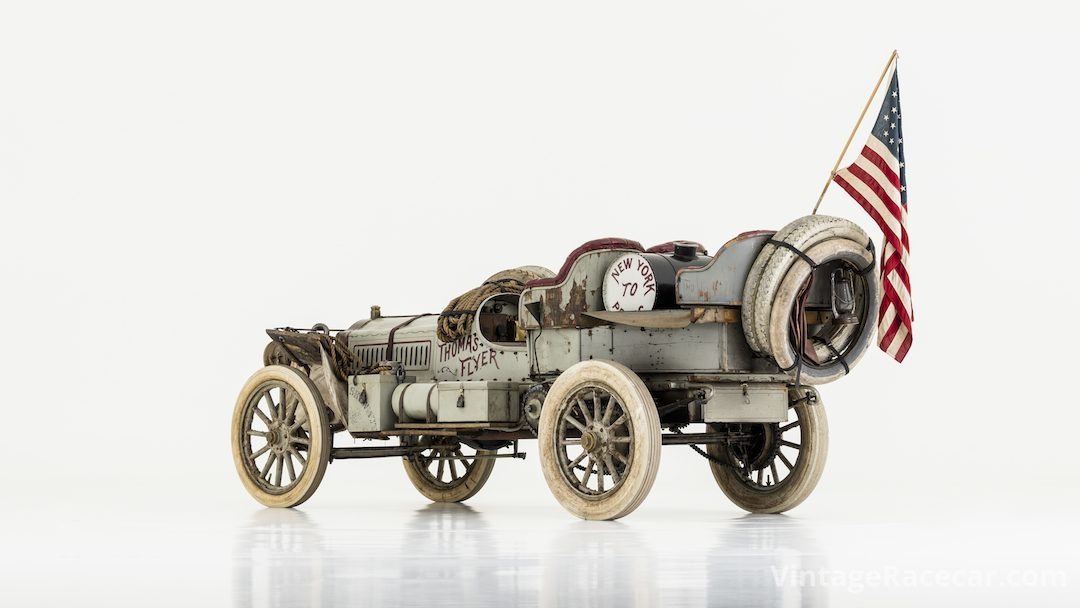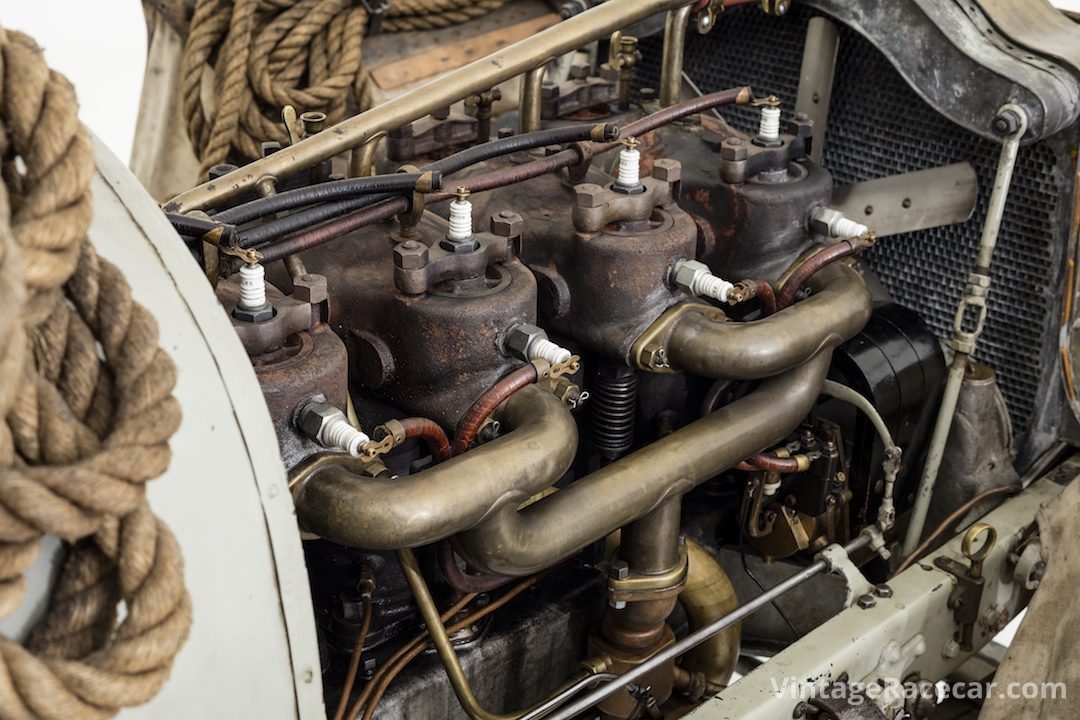The Historic Vehicle Association (HVA) has announced that that the 1907 Thomas Flyer has joined other automotive icons on the National Historic Vehicle Register. The car, winner of the 1908 New York to Paris Automobile Race, will be exhaustively measured and documented by the HVA using the guidelines set by the Secretary of the Interior’s Standards for Heritage Documentation and the Historic American Engineering Record (HAER). Once complete, the material will permanently reside in the Library of Congress, joining such legendary cars as the Shelby Cobra Daytona prototype, the first Meyers Manx dune buggy, one of the last surviving Futurliners and the Marmon Wasp—winner of the very first Indianapolis 500. This is being done to preserve an important chapter in America’s automotive heritage.

The Thomas Flyer is owned by the National Automobile Museum (The Harrah Collection) in Reno, Nevada.
(Next page for more)
The car was in very poor condition, from years of neglect, when it was purchased by Bill Harrah, founder of Harrah’s Automobile Collection and Harrah’s Hotels & Casinos, in 1964 from Henry Austin Clark, Jr., of Long Island, New York. To authenticate the car, Harrah contacted 91-year-old George Schuster, who had driven the Flyer to victory, and invited him to Reno. During the dismantling of the Flyer, Schuster witnessed cracks in the frame and repairs he had made during the race, proving its authenticity.
The Thomas Flyer was restored to the condition in which it appeared upon finishing the race. This was one of the most enthusiastic and enterprising projects attempted by Harrah’s world-renowned restoration shops, involving the skills of more than 40 craftsmen and restoration experts. After completion, in a record six weeks, it was approved for a “Gold Star,” the highest restoration designation given by Harrah’s Automobile Collection for quality and authenticity. The car was subsequently “aged” to give it the patina expected of a car that had driven around the world. Harrah’s team worked with Disney and other experts to ensure the seats, the paint, and all of the finishes had just the right look. Today the car remains in this condition, even adorned with mud on the wheels and tires for added effect.
(Next page for more)
“The 1907 Thomas Flyer was certainly a road-worthy warrior. Just three days before the 1908 New York to Paris Race, it was pulled off the floor of the E.R. Thomas Company’s showroom,” said Jackie Frady, president and executive director of the National Automobile Museum (The Harrah Collection). “After 169 days of fierce competition the Thomas Flyer claimed victory and earned its place in history. It dramatically increased the prestige of American-made automobiles and proved that automobiles could be a year-round mode of transportation and a means of long-distance travel.”
About the Thomas Flyer:
1907 Thomas Flyer Model 35
Built by E.R. Thomas Motor Company, Buffalo, New York
Engine: 4 Cylinders, 60 H.P.
Displacement: 571.3 cubic inches
Wheelbase: 118 inches
Weight: 3,200 lbs (est.)
Price: $4,500









